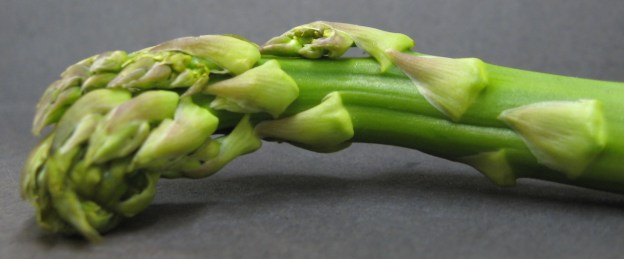It’s the spring of 2020, and like millions of others, we Botanists in the Kitchen are sheltering at home, trying to help flatten the curve. In other words, we are stuck in the kitchen. However, neither of us is complaining right now. Personally, I (Katherine) feel secure in my home, and I am (for now) healthy. I have access to fresh and nutritious food (thank you small-holder farmers), and at the end of the day I can go for a long run along a lovely creek lined with trees and birds. Both are opportunities to connect with plants, and this blog has always been about helping people connect to plants that might just be sitting in their refrigerators.
Like many other educators, I have also been preparing to teach a spring quarter botany course, from my sofa, through a laptop. In rethinking what is essential to the class and what might be necessary for my students in this moment, I decided to assign a new reading. It’s a 2015 study by some Stanford colleagues who found, basically, that a walk through a natural green space reduced anxiety compared to a similar walk through an urban area. Maybe that’s not surprising, but they also investigated potential mechanisms by measuring the way people’s brain activity differed in the two situations. Their data suggest that an immersive experience in “nature” (with plants) reduces the kind of unproductive rumination that feeds anxiety. Nobody has done the same experiment comparing our anxiety levels after scrolling through social media or after carefully preparing broccoli and marveling at the fractal arrangement of its unopened flower buds. I do have a prediction, though. Under the current conditions, maybe it’s time to move into the kitchen and see what’s in the fridge.
P.S. If you are food-secure and financially able at this time, please consider giving to your local food bank. Everyone should have nutritious fresh food for body and mind.
Reference

Walks in nature have been known for quite some time to have many benefits. Darwin would walk a path near his home to work out problems he was thinking on. Haruki Murakami and Bernd Heinrich both run to work out problems, as well as for inspiration.
LikeLike
Hooray! Love the asparagus video Katherine! — I just made a video for my students in my own kitchen yesterday about leaves and axillary buds in bok Choi and this is a great accompaniment!
Yours is much more professional looking (and with a better knife). Thanks so much for doing this— can’t wait for the next installment.
(Couldn’t post this because I can’t remember my word press password….) Cheers, Dana
On Wed, Mar 25, 2020 at 9:55 PM The Botanist in the Kitchen wrote:
> katherineapreston posted: “It’s the spring of 2020, and like millions of > others, we Botanists in the Kitchen are sheltering at home, trying to help > flatten the curve. In other words, we are stuck in the kitchen. However, > neither of us is complaining right now. Personally, I (Kather” >
LikeLike
Thanks, Dana! I’d love to see your video.
LikeLike
Hi Katherine ….. It’s been awhile. I’m the quinoa guy, in case you don’t remember this email address. I was wondering about something, and realized that you might be the perfect person to ask. It’s about the germ of the quinoa seed. The germ wraps around the outside of the quinoa seed, unlike all other grains which have the germ imbedded within the seed. My guess is that this allows the quinoa germ to develop more quickly once the seed comes in contact with water. Apparently quinoa will germinate with only 4 hours in a glass of water, whereas a wheat seed takes 12 hours. So, wrapping the germ around the outside of the seed seems like it might be a kind of survival mechanism for life in an arid environment. Does this rather simplified analysis make sense to you? Also, are there any other seeds that wrap the germ around the outside? Or is quinoa unique in this aspect? Thanks so much! Please be well and safe during these crazy times! Peace,Stephen Gorad
LikeLike
Hi, Steve,
Yes, I remember you, of course. Thanks for writing. I have not been able to find any studies that look at the functional benefit of a curved embryo. The big clade within the Amaranthaceae that contains Chenopodium is characterized by a curved embryo that wraps around the nutritive tissue (which in this case is called perisperm instead of endosperm). My first instinct would be to seek a more arbitrary or constraint based explanation before positing an adaptation to aridity. This is all just speculation, though, so like a good halophyte, take it with a grain of salt!
LikeLike
Careful what you wish for… here’s a link to the one I did on red cabbage: https://www.youtube.com/channel/UCM5AOuICCMKn5MI2NQVWZgA?view_as=subscriber
can’t wait to see more videos if you have time… I have always been a huge fan of the Botanist in the Kitchen blog. Take care and stay as safe as you can… D
LikeLike
I love this! The greening up part is really interesting. I’ve subscribed, and I look forward to seeing more.
I’ve got video of a particularly stemmy kale plant ready for editing, and it will be sort of similar to your video.
LikeLike